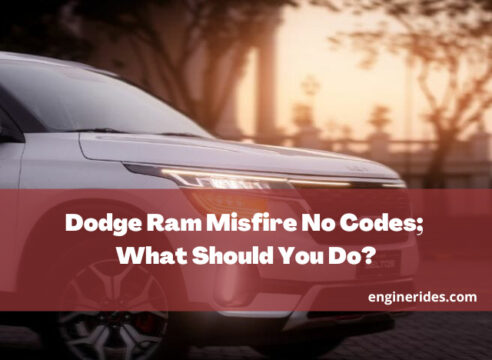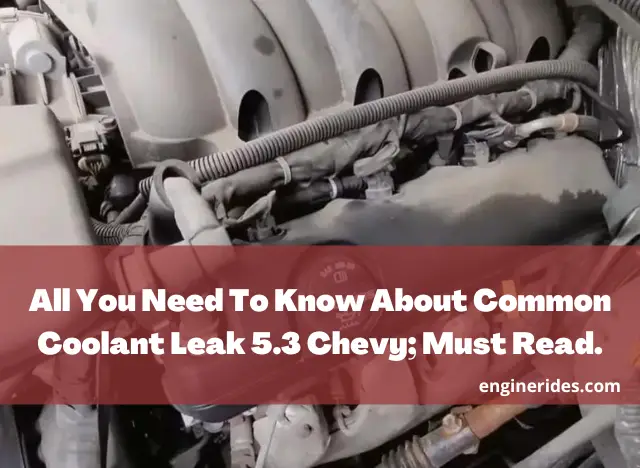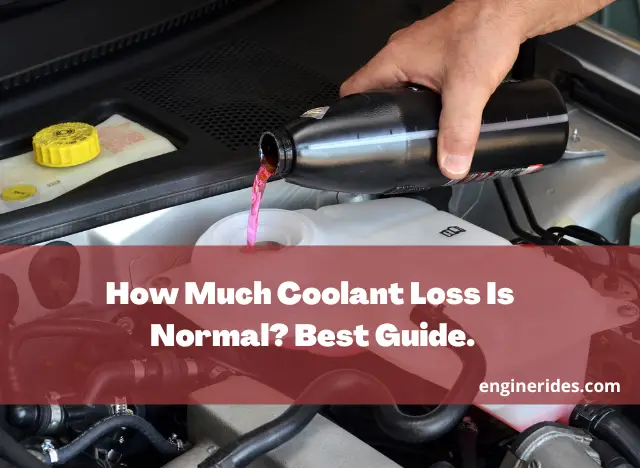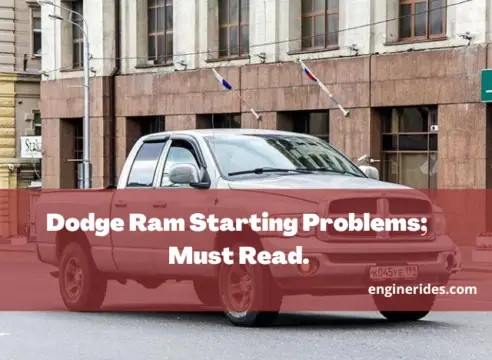Dodge Ram Misfire No Codes; What Should You Do?
Experiencing a misfire in your Dodge Ram without any error codes can be frustrating. In this guide, we’ll explore the steps to diagnose and address this issue. From checking spark plugs to examining the air intake system, we’ll help you uncover the root cause and get your engine running smoothly.
Table of Contents
What causes Dodge Ram Misfire No Codes?

Indeed, let’s delve into the potential causes of a Dodge Ram misfire without any error codes and explain each one in detail:
1. Spark Plug Issues
Spark plugs play a critical role in initiating combustion by generating a spark to ignite the air-fuel mixture. Over time, spark plugs can wear due to constant exposure to high temperatures and pressure. They can also accumulate deposits from combustion byproducts and fuel additives. This wear and fouling result in inefficient spark generation.
- Symptoms: Worn or fouled spark plugs can lead to a rough idle because of inconsistent firing in the affected cylinders. The engine may hesitate during acceleration, experience a loss of power, and exhibit decreased fuel efficiency.
- Solution: Regularly inspect spark plugs for wear, fouling, or damage. Replace them based on the manufacturer’s recommended maintenance schedule. High-quality spark plugs can extend their lifespan.
2. Ignition Coil Problems
Ignition coils are responsible for converting the low-voltage electrical signal from the vehicle’s battery into a high-voltage spark that ignites the air-fuel mixture in the combustion chamber. These coils can deteriorate over time, developing cracks or corrosion on their surfaces. Such damage impedes their ability to deliver a strong, consistent spark to the spark plugs.
- Symptoms: Faulty or corroded ignition coils can cause intermittent misfires, especially when the engine is under load. The engine may exhibit a lack of power and inconsistent performance.
- Solution: Inspect the condition of ignition coils regularly. Replace any coils showing signs of damage or corrosion.
Why does the Gas coming out of exhaust? All You Need To Know
enginerides.com
3. Fuel Injector Blockage
Fuel injectors are responsible for spraying a precise amount of fuel into the combustion chamber. Over time, they can become clogged or dirty due to impurities in the fuel or carbon buildup from combustion. These obstructions disrupt the proper delivery of fuel.
- Symptoms: Clogged fuel injectors can lead to hesitation, reduced power, and poor fuel economy. Misfires can occur when the engine does not receive the correct amount of fuel.
- Solution: Attempt cleaning the fuel injectors with a high-quality fuel injector cleaner. If cleaning does not resolve the issue, professional cleaning or replacement may be necessary.
4. Air Intake Restrictions
The air intake system ensures a steady flow of clean air to mix with fuel for combustion. A contaminated or obstructed air intake system restricts airflow, affecting the air-fuel mixture’s composition and quality.
- Symptoms: A restricted air intake system can reduce engine performance, particularly during acceleration and at idle. The engine may exhibit rough idling and decreased power output.
- Solution: Inspect and clean air filters, throttle bodies, and intake components regularly. Replace or repair any damaged parts that impede airflow.
5. Vacuum Leaks
Vacuum leaks occur when unintended openings or cracks develop in the intake manifold or vacuum hoses. These leaks introduce additional, uncontrolled air into the engine, leading to an imbalance in the air-fuel mixture.
- Symptoms: Vacuum leaks can cause unstable idling, performance issues, and potential hissing sounds. Misfires can occur as a result of the altered mixture.
- Solution: Use diagnostic tools or a smoke machine to locate and repair vacuum leaks. Replacing damaged hoses or gaskets is often necessary.
6. Incorrect Engine Timing
Engine timing refers to the precise coordination of the opening and closing of engine valves and ignition timing. If the timing is misaligned, the combustion process can be disrupted, leading to misfires.
- Symptoms: Incorrect engine timing can result in suboptimal performance throughout the RPM range. Unusual noises, such as knocking, may also be present.
- Solution: Consult a qualified mechanic to inspect and adjust engine timing. Timing belt or chain replacement may be necessary in some cases.
By understanding these detailed causes, you can better diagnose and address the misfire issue in your Dodge Ram without error codes. If problems persist after addressing these factors, seeking professional assistance from a mechanic is recommended for further investigation and repair.
What about Dodge Ram multiple cylinder misfire?

A multiple cylinder misfire in a Dodge Ram occurs when two or more engine cylinders fail to ignite the air-fuel mixture properly, resulting in a noticeable loss of engine power, rough idling, and poor overall performance. Several factors can contribute to this issue:
- Fuel Delivery Problems: Insufficient fuel supply due to a failing fuel pump, clogged fuel filter, or low fuel pressure can affect multiple cylinders.
- Common Ignition Components: A malfunctioning ignition coil, distributor cap, or spark plug wires can disrupt ignition for multiple cylinders.
- Faulty Mass Airflow Sensor (MAF): An inaccurate MAF sensor can lead to improper air-fuel ratios, causing misfires in multiple cylinders.
- Exhaust System Restrictions: A blocked catalytic converter, exhaust pipe, or malfunctioning oxygen sensor can hinder exhaust flow, affecting multiple cylinders.
- Engine Mechanical Issues: Worn piston rings, damaged valves, or low compression can impact the combustion process across multiple cylinders.
- ECM Malfunctions: Problems with the Engine Control Module (ECM) can result in erratic engine behavior, including multiple cylinder misfires.
Addressing a multiple-cylinder misfire requires a thorough diagnostic process, often involving error code scans, fuel system checks, ignition system inspections, and examination of various engine components. Seeking professional assistance from a qualified mechanic is crucial to pinpointing the root cause and implementing the necessary repairs for optimal engine performance.
Chevy Volt “Not Able To Charge”; What Does It Mean?
enginerides.com
Can you drive with a misfire?
Driving with a misfire is possible but not recommended. A misfire can cause reduced performance, poor fuel efficiency, and potential damage to your vehicle’s engine and catalytic converter. It may compromise safety, especially in situations requiring quick acceleration or responsiveness.
Continued driving with a misfire can lead to costly repairs and increased emissions, potentially affecting your vehicle’s reliability and environmental impact. It’s advisable to have the issue diagnosed and repaired promptly by a qualified mechanic to ensure optimal vehicle performance, safety, and longevity.
Some related FAQs
Should I attempt to fix a misfire issue myself, or should I consult a mechanic?
It’s advisable to consult a qualified mechanic, especially if you’re unsure about the cause of the misfire. They have the expertise and diagnostic tools to pinpoint and repair the issue correctly, preventing further damage.
Can a misfire damage my Dodge Ram’s engine?
Yes, if left unaddressed, a misfire can lead to engine damage, especially if it causes overheating or if unburned fuel enters the exhaust system and damages the catalytic converter.
Are misfires covered under warranty for new Dodge Ram vehicles?
Misfires may be covered under warranty if they are caused by a manufacturer defect. However, it’s essential to check your vehicle’s warranty documentation and consult the dealership for specific coverage details.
Can a misfire cause the “Check Engine” light to come on in my Dodge Ram?
Yes, a misfire can trigger the “Check Engine” light to illuminate. The onboard diagnostics system often detects misfires and stores error codes related to the issue.
Is it safe to continue driving my Dodge Ram after fixing a misfire issue?
Once the misfire issue is resolved, your vehicle should be safe to drive. However, it’s essential to follow the recommended maintenance schedule and address any future issues promptly to ensure ongoing safety and performance.








2 Comments